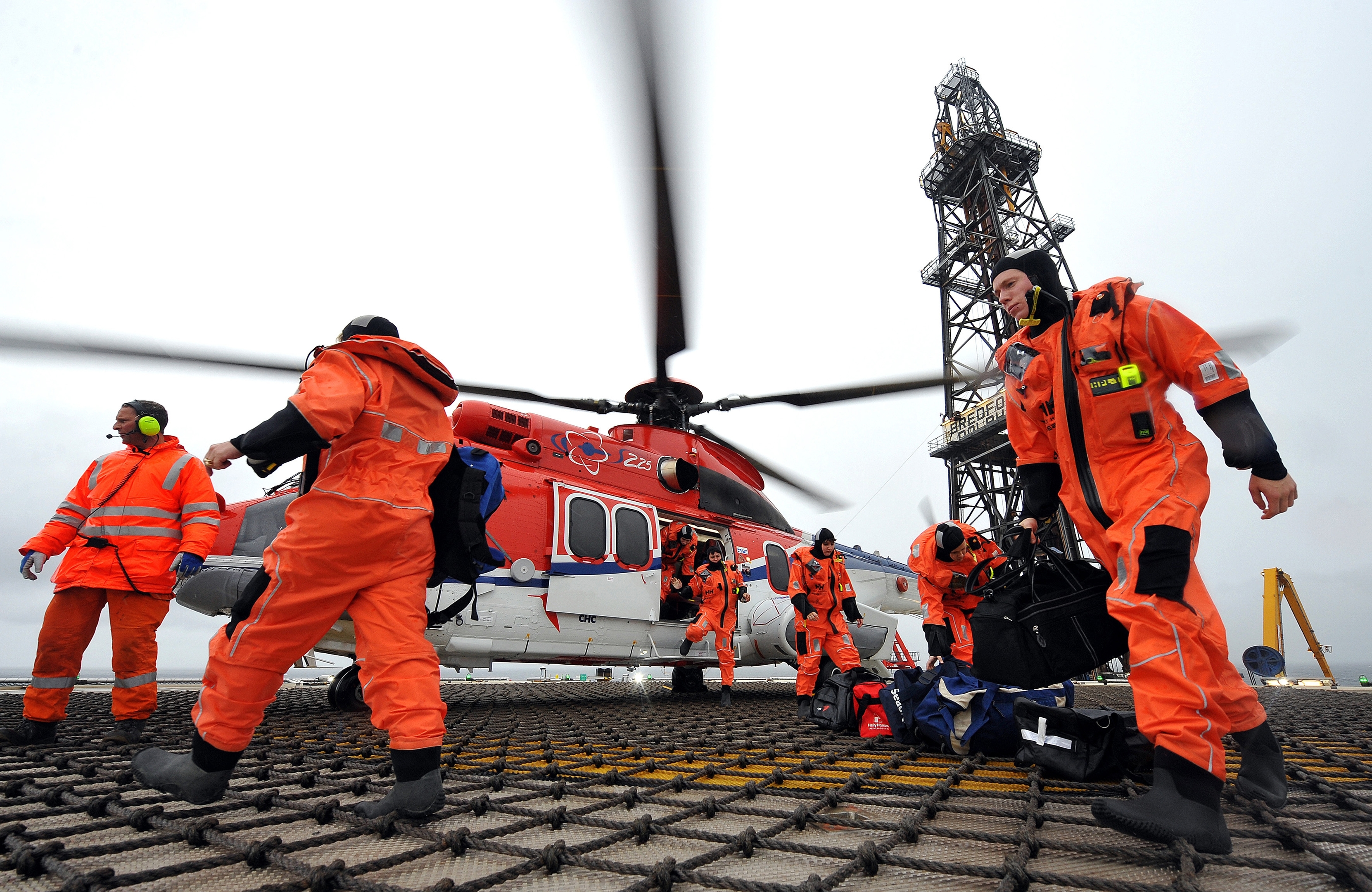
Super Puma helicopters have been cleared for take-off after safety chiefs removed all restrictions on the aircraft.
The over-water flying ban on the EC225 models has been lifted after manufacturer Eurocopter won top-level backing for aseries of improvements.
The European Aviation Safety Agency yesterday rubber-stamped the French firm’s plans to prevent a repeat of the recent North Sea ditchings.
And last night that decision allowed the UK’s Civil Aviation Authority to give the all-clear for take-off.
North Sea operators Bond, CHC and Bristow’s will now bring all their aircraft up to the new standards, before returning the copters to service later this month. The news was widely welcomed by the industry last night – but workers remain nervous.
The fleet was grounded after gear-shaft failures led to two ditchings last year.
The first was in May about 30 miles from Aberdeen and the other in October near Shetland.
Last night Eurocopter said the return to service was a “major milestone”.
“Eurocopter is now focused on supporting customers to put in place the required modifications and maintenance activities,” a spokesman said.
“Safe operation is Eurocopter’s main priority.”
The company’s new measures aim to prevent and detect gear-shaft cracks on the EC225.
The aircraft manufacturer said that moisture in the gear system had created the cracks which led to last year’s ditchings, so an oil jet lubrication system had been modified to tackle the issue.
All EC225s will also be fitted with vibration sensors which would notify pilots if a crack was starting to appear, giving them enough warning of the problem to avoid a ditching. Pilots will be given fresh training on how to use the measures.
A spokesman for the CAA said: “Following publication of an airworthiness directive by the European Aviation Safety Agency for Super Puma helicopters, we will subsequently amend its operational restriction on the helicopter type, allowing each aircraft to return to service once the requirements of the agency’s directive are met.”
The Helicopter Safety Steering Group – an industry-wide team set up by Step Change in Safety – welcomed the decision.
“This is the first major step in bringing the fleet of EC225 helicopters back to safe flight operations,” he said.
“The safety barriers proposed will give several layers of assurance that this helicopter is safe to fly.
“EASA has accepted both the root cause of the EC225 ditching and the solutions as identified by Eurocopter.”
He added: “HSSG recognises the nervousness of the workforce about the return to service and remains committed to ensuring sufficient information is provided at all stages of the journey towards flight.”
SEE OUR INTERVIEW WITH GUILLAUME FAURY ON THE FUTURE OF THE SUPER PUMAS BELOW
Recommended for you
